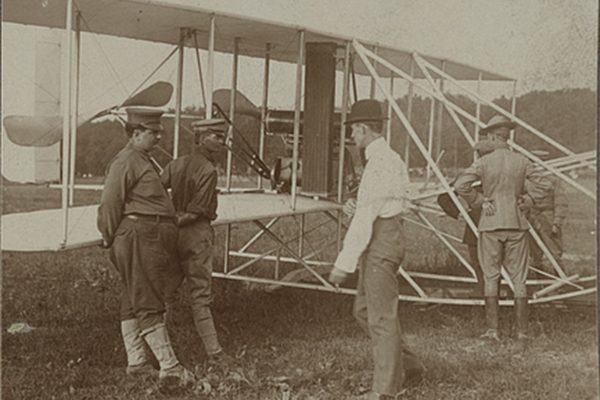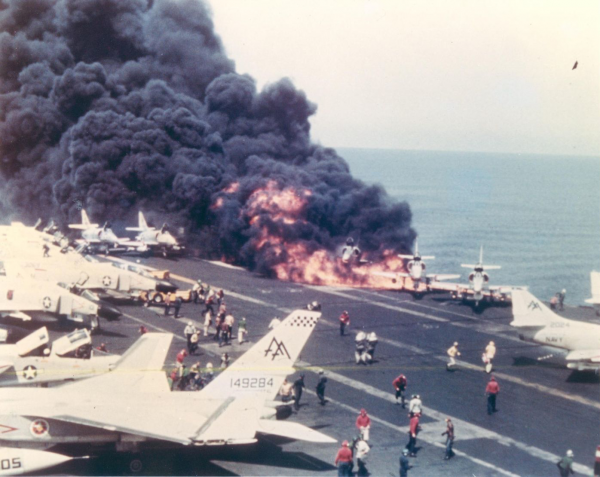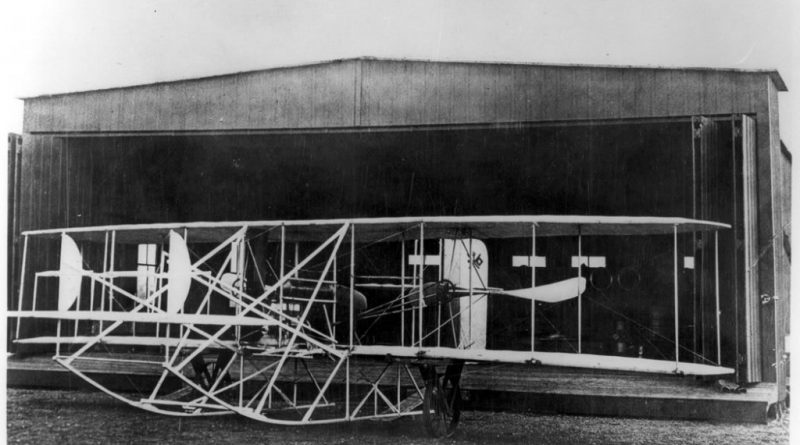July 30 in U.S. military history
1780: A force of 600 militiamen led by Col. Isaac Shelby surrounds Thicketty Fort (South Carolina) and demands that the Loyalists surrender. Despite having sufficient arms to repel the patriots, and a promise by garrison commander Capt. Patrick Moore to defend the fort to the last, the Loyalists surrender without firing a shot.
1864: In a special operation that proves disastrous for the initiators, Union Army troops under the command of Maj. Gen. Ambrose E. Burnside detonate a mine, literally blowing a huge hole (or crater) in the Confederate defenses at Petersburg, Virginia. Several units of Union soldiers charge in after the explosion, but each unit is beaten back with heavy losses by Brig. Gen. William Mahone’s Confederates .
1909: (Featured image) Just days after a successful demonstration flight, the Army Signal Corps takes delivery of the “world’s first military airplane,” the Wright military flyer of 1909.

1918: Spearheading an American assault on German lines, Sgt. Richard W. O’Neill attacks a detachment of 25 enemy soldiers. He closes in and engages in fierce hand-to-hand combat. Though all of his troops are killed and he is wounded ten times, he continues on until he has to be evacuated. Before leaving the battle, he insists on reporting to the battalion commander on enemy locations and the disposition of friendly troops.
O’Neill is awarded the Medal of Honor for his actions, and when World War II breaks out, his former commander (and fellow Medal of Honor recipient) William Donovan hires O’Neill to work for him in the Office of Strategic Services (OSS).
1919: USS New Orleans (CL-22) lands a Marine detachment in Tyutuke Bay, Siberia, in support of a White Russian attack on Bolshevik forces.
1941: The river gunboat USS Tutuila (PR-4) of the Yangtze Patrol becomes the first U.S. warship attacked during World War II when Japanese aircraft mistakenly bomb the vessel in Chunking, China.
1945: Shortly after completing its top-secret mission of delivering components of the atomic bomb destined for Hiroshima to Tinian Island, the cruiser USS Indianapolis is hit by two Japanese torpedoes, and slips beneath the waves in just 12 minutes, becoming the last U.S. ship sunk during World War II. The Navy is unaware of the sinking, so the sailors will spend the next three-and-a-half days in shark infested waters before they are spotted. Only 317 of the original 1,196 crewmembers survive.
1967: Fire erupts on the aircraft carrier USS Forrestal when a power surge in an F-4 Phantom launches a rocket into an A-4 Skyhawk’s fuel tank. The flight deck is packed with planes ready for takeoff, loaded with fuel and ordinance, resulting in a conflagration and series of explosions that kills 134 sailors and destroys 21 aircraft.

